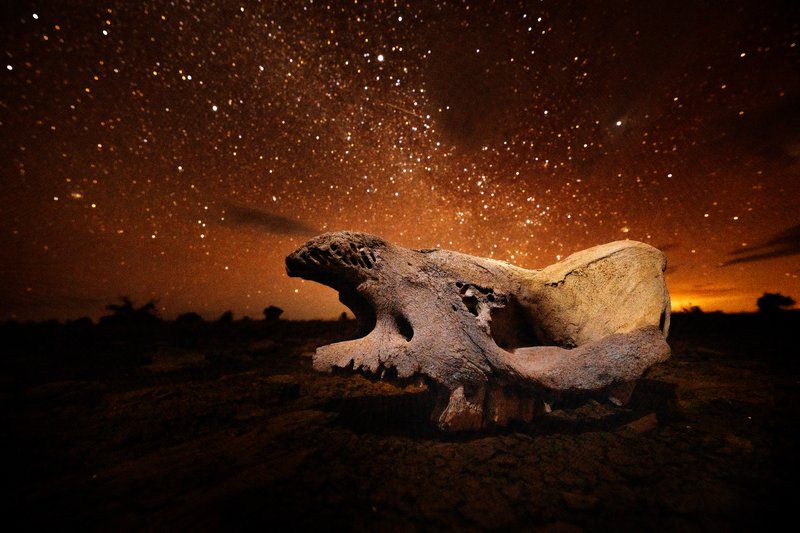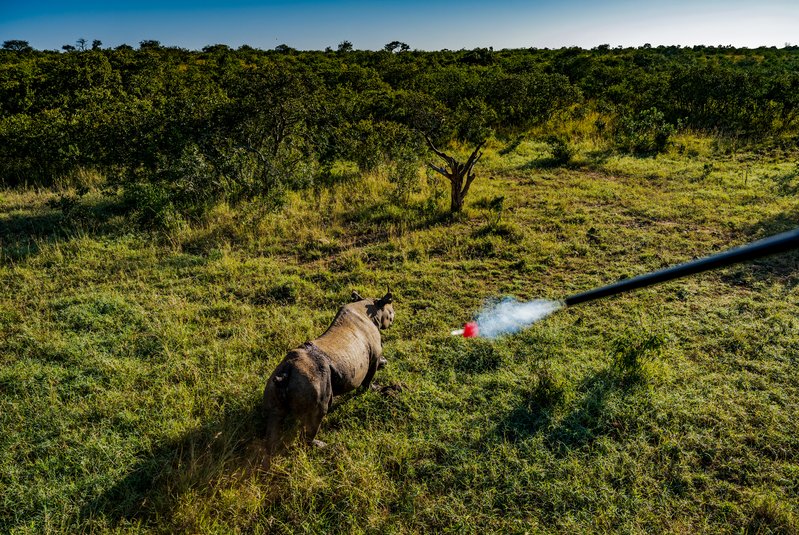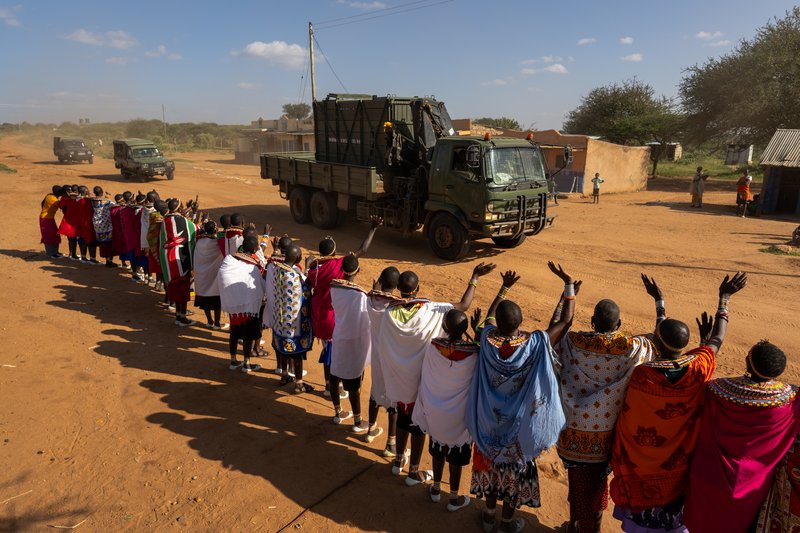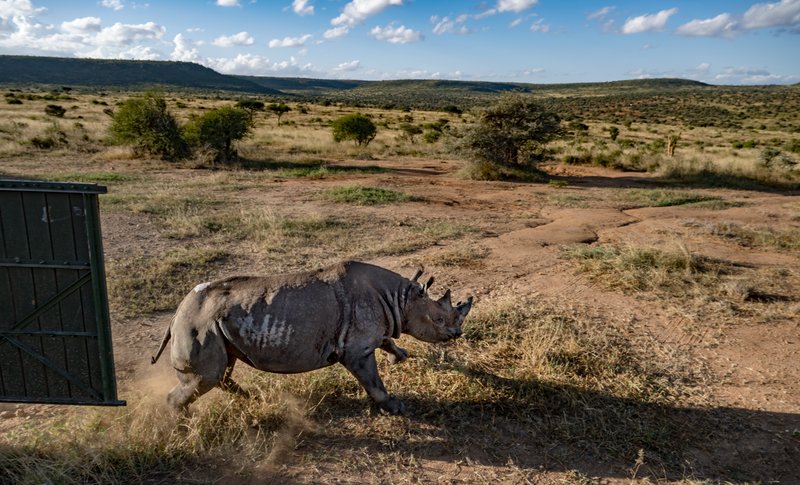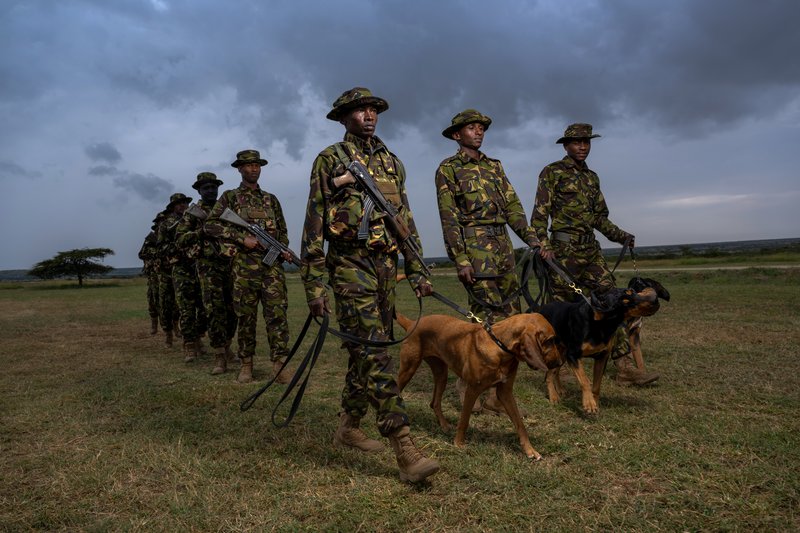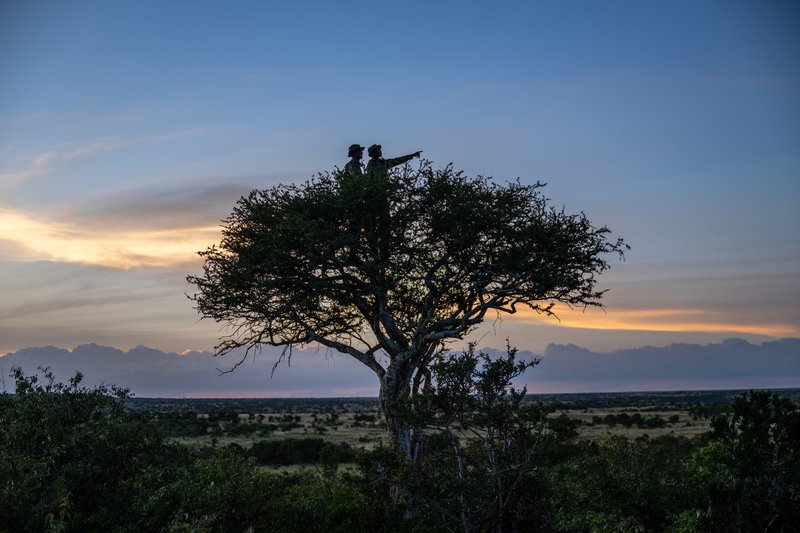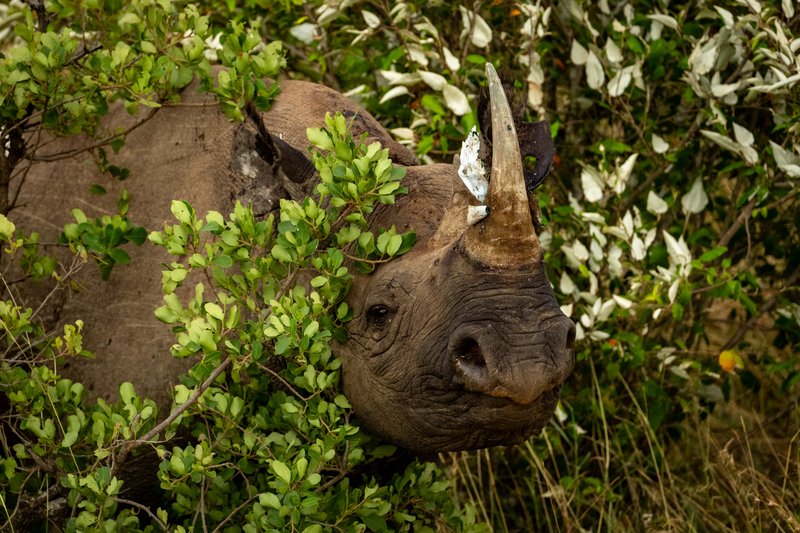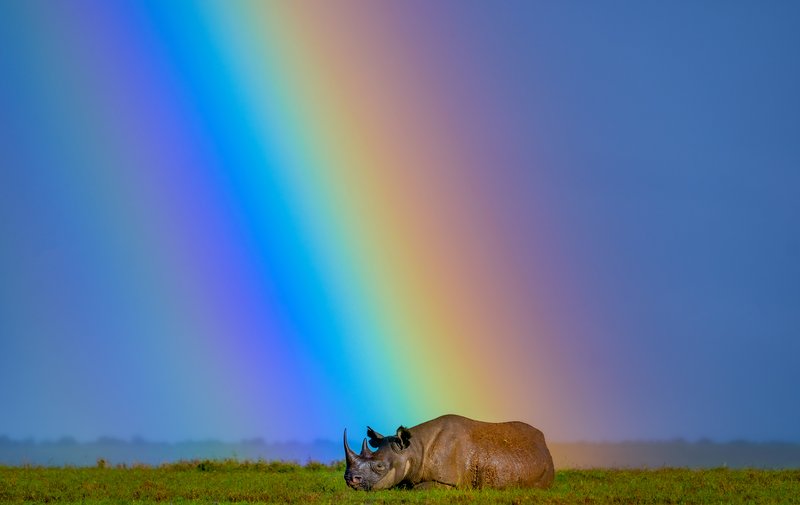First Place: Kenya's Black Rhino Revival
Kenya's Black Rhino Revival
The Ewaso community lines the street to greet the convoy carrying black rhinos as they arrive to Loisaba Conservancy in Laikipia, Kenya. The nearby communities are anticipating better security and more opportunities from the rhinos. Kenya’s black rhino population was poached almost to extinction and went from a low of a few hundred animals in the mid-1980s to about 1,004 black rhinos, according to the Kenyan wildlife service. That’s the third biggest black rhino population in the world behind South Africa and Namibia. This expansion of their habitat and growing population is a testament to Kenya’s conservation efforts. Such a reception is not just ceremonial; it reflects a profound connection between the people and their natural heritage. In Kenya, the preservation of wildlife isn't solely the responsibility of conservationists and rangers; it’s a communal effort deeply woven into the fabric of society. This inclusive approach is a testament to the nation's commitment to protecting its rich biodiversity. By involving local communities directly, Kenya has fostered a sense of ownership and pride in the country's natural resources. This collaborative spirit is one of the reasons why Kenya has witnessed remarkable success in conserving its rhinoceros population, achieving the extraordinary feat of having no rhinos poached in many years while other countries continue to grapple with rising incidents of poaching. Community engagement initiatives ensure that the incentives for conservation align with the interests of the people who live alongside these animals.
Ami Vitale
